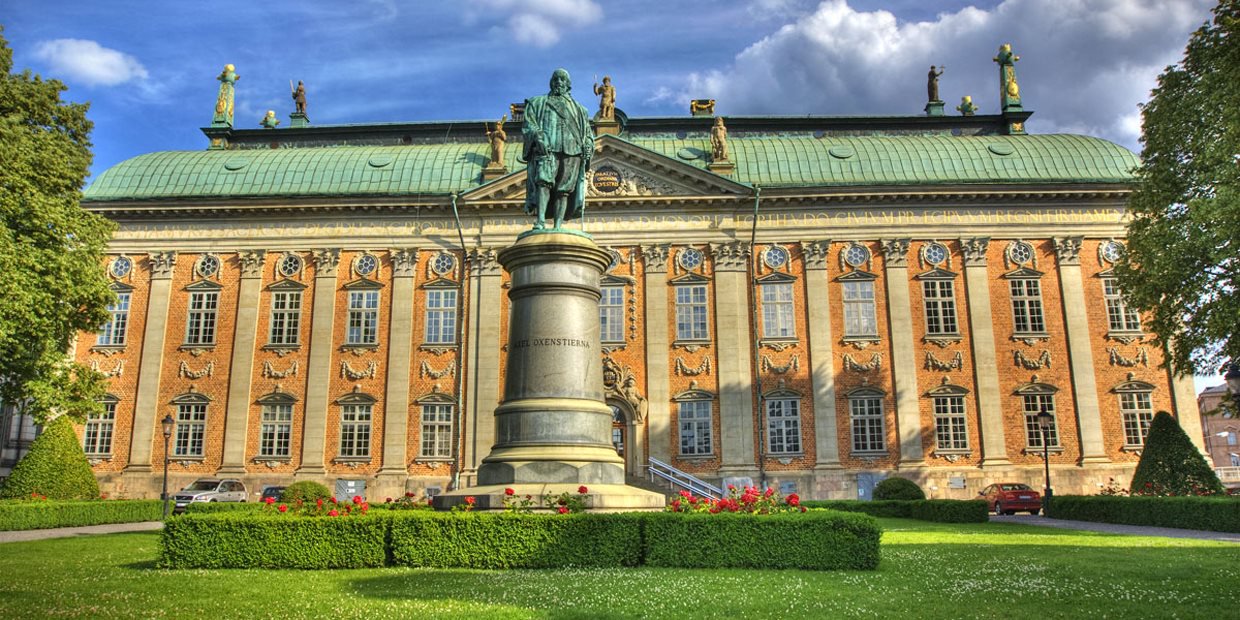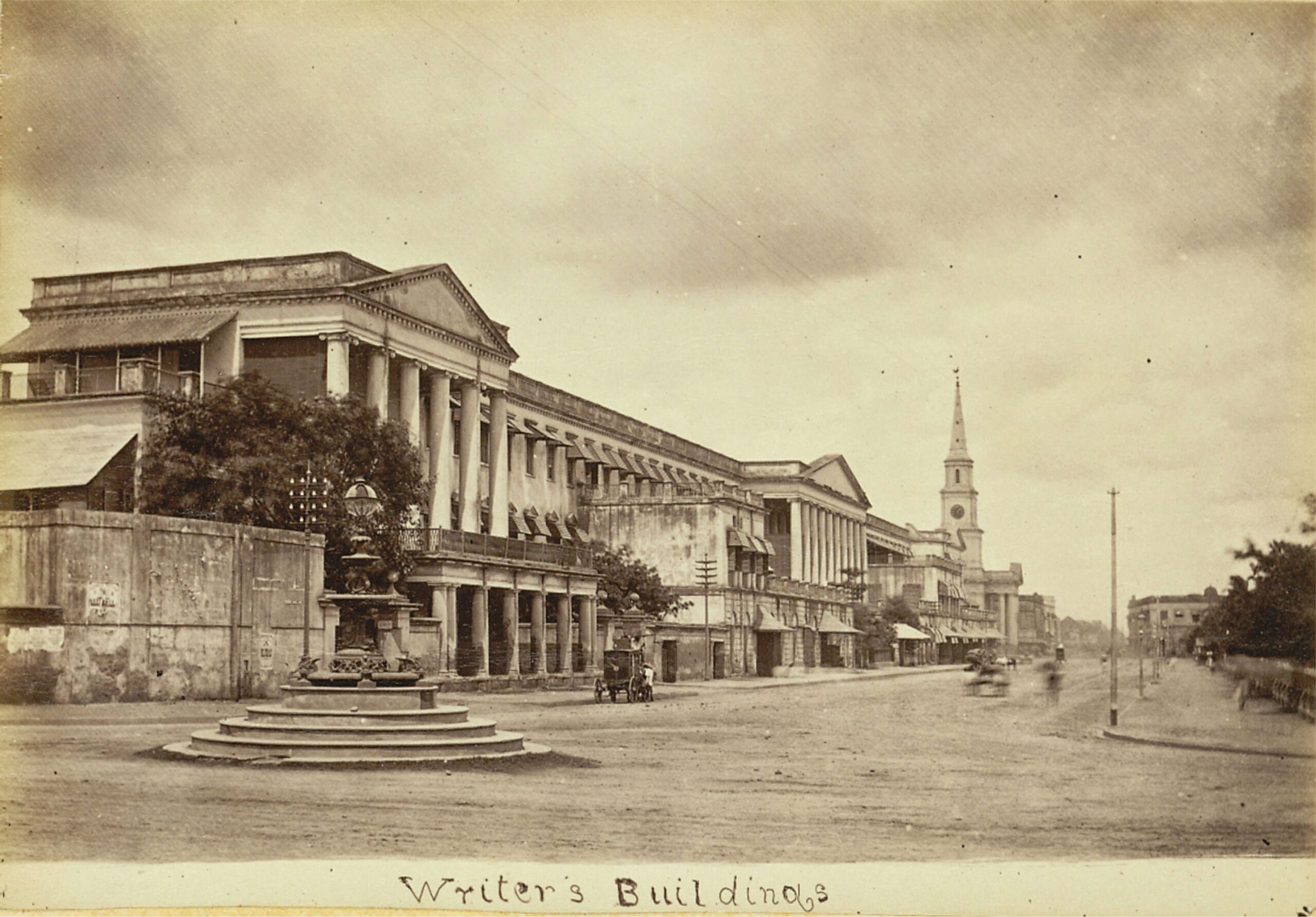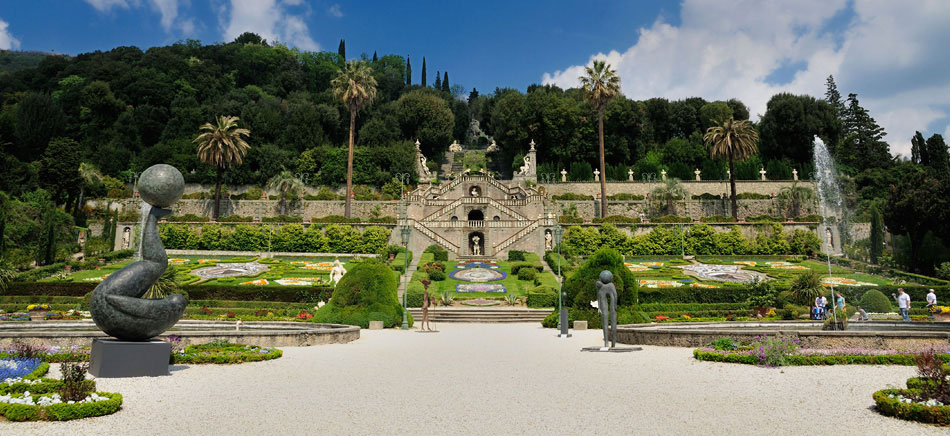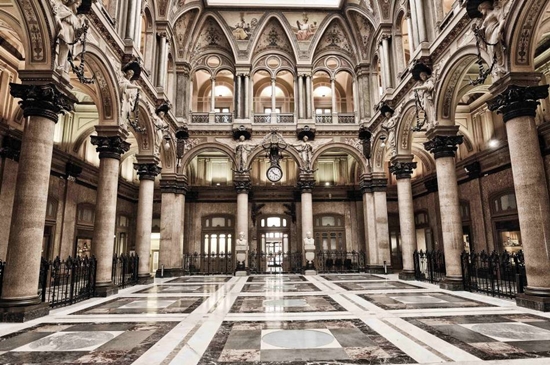The House of Nobility (Riddarhuset, “the House of Knights”) was built in 1641-1672 as a chamber of Estates of the Realm, and as such, a Swedish equivalent to the British House of Lords. After 1866, when the Riksdag of the Estates was replaced by the new parliament, the Swedish House of Nobility served as a quasi-official representation of the Swedish nobility, regulated by the Swedish government.
The building design was started by the French-born architect Simon De la Vallée, but was killed by a Swedish nobleman in 1642.
The plans were eventually finished by his son, Jean De la Vallée, in 1660. In the 18th century, the building was often used for public concerts. From 1731, public concerts were performed here by Kungliga Hovkapellet. The south end of the building carries the Latin inscription CLARIS MAIORUM EXEMPLIS, after the clear example of the forefathers, and holds a statue of Gustav II Adolph.
References:
Wikipedia













